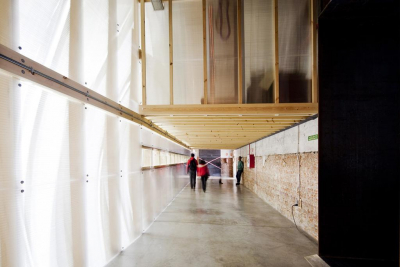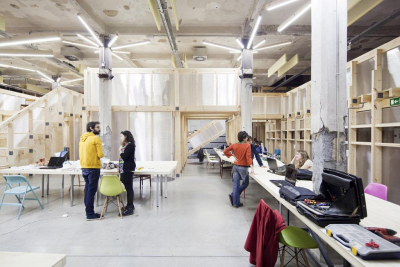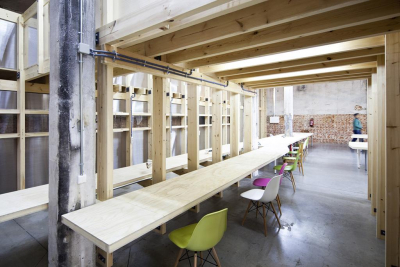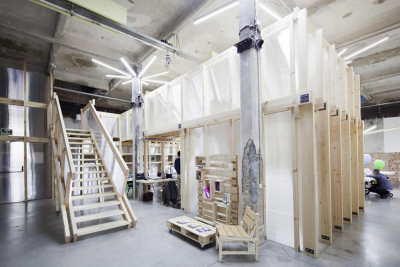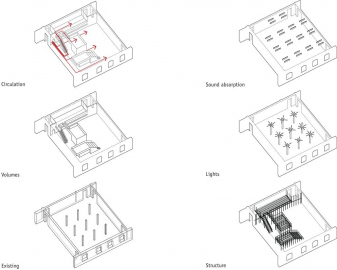Cultural Factory in Matadero
FCMM is the adaptation of medium-sized hall in Matadero Madrid to house an incubator of cultural industries. The clients money was very short but ambitions very high: what processes shape the modern workplace? Is space an agent for creativity? Could we program change as a tool for sustainability?
A way out of the opposing tensions of having no money and big needs was using very few, cheap, and easy to install materials, and try to achieve with them as many different and distinct work areas as possible, adapted to different needs.
Three volumes near the entrance organize the space, folding and compressing the circulations around it. This creates a gradient, from compact to expansive, from busy to silent, that helps achieve variety in work spaces. in 1 month we built a reversible, vacuum-packed, 105 /m² work, adaptable to the multitude of situations the client asked for.
To house the needed 120 work spaces in a 399 m² floor area that needed to be further reduced to 340 m² in order to maintain a public pass-through was impossible, unless we found more space using the height of the hall. This created problems since there was not enough money to achieve the construction of a second floor by traditional means. We decided to use very simple building systems: the cheapest local pine lumber, all in the same standard size, which simplified construction of the structure, and multi-wall polycarbonate, very lightweight and in large sheets, which allowed for the walls to be finished in one day.
We were able to build three small volumes, or architectural objects, that changed and modified the quality of the available space, naturally producing the diverse working areas we thought necessary. These three distinct volumes near the entrance help organize the program, folding and compressing the circulations around it, making them as exact and compact as possible. This organization not only saves space by reducing circulation areas, but it creates a gradient, from compact to expansive, from busy to silent, that helps achieve the needed variety in work environments.
The scarcity of means allowed us to research one spatial intuition: creative work, and workers, thrive in environments that seem not completely designed, not completely finished, spaces that seem to be caught in the middle of a process, surprised by a change in conditions. It also allowed for small experiments in architecture, with demonstrative qualities. Among them: the light fixtures are made up of the cut outs made to the vertical structural wood elements between the floor and the handrail; a ridiculously simple sound absorbing system corrects the sound conditions that would otherwise rely on heavy, traditional, and unaffordable wall construction.
Our main worry was to make it possible. At 105 /m² we are very happy to have helped its basic architectural sustainability: to achieve a high social and usage impact for the money.
Pinewood from sustainable local forests was used. 8,80 tons of CO2 are captured in it.


